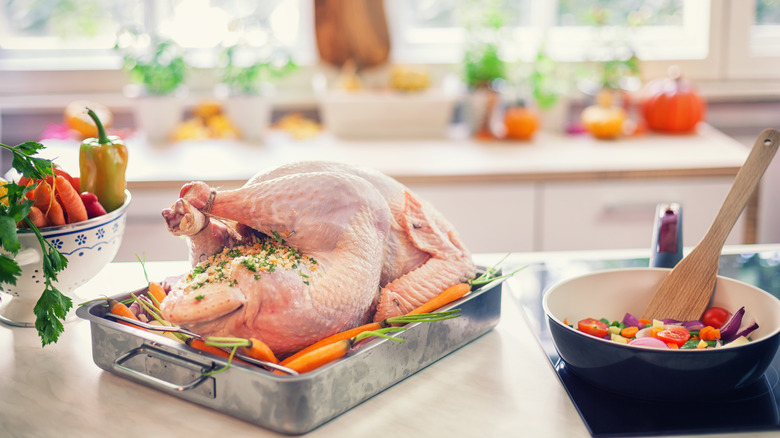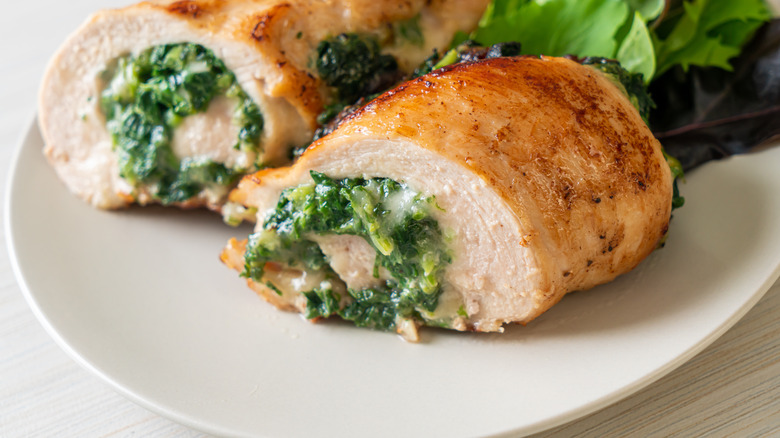Why You Should Never Prepare Stuffed Chicken Too Far In Advance
When it comes to preparing a delicious dinner, stuffed chicken is a classic favorite for many. It's versatile, allowing for a myriad of options, from herby breadcrumbs to rich, gooey cheese, and even combinations of vegetables. However, despite its potential for a mouthwatering meal, you should never prepare your stuffed chicken too far in advance. This isn't just a suggestion but a guideline rooted in both food safety and quality concerns, per the U.S. Department of Agriculture (USDA).
Raw poultry is notorious for being a potential source of harmful bacteria such as salmonella, clostridium, and campylobacter which can cause foodborne illnesses if not properly managed. Stuffing your bird and then leaving it for too long before cooking creates an ideal environment for these bugs to thrive. The issue is compounded when the stuffing includes ingredients that are also highly susceptible to bacterial growth, such as dairy or eggs. And even the idea of refrigerating raw stuffed chicken is not recommended by the USDA.
Besides the safety aspect, there's also the matter of meal quality. Fillings prepared too early can become soggy from sitting inside the raw bird, leading to a less appealing texture and flavor. However, if you're looking to save time and reduce your workload on the day of cooking stuffed chicken, preparing the filling ahead of time is a feasible option when done correctly.
Preparing stuffing in advance the safe way
The key is to handle the stuffing ingredients in a way that maintains food safety and quality. One method is to prepare the wet and dry ingredients of the stuffing separately and keep them chilled until you're ready to cook. This approach prevents the ingredients from becoming soggy and reduces the risk of bacterial growth. When it's time to cook, mix the ingredients, stuff the chicken, and cook it immediately ensuring both the bird and the stuffing reach the safe internal temperature of 165 degrees Fahrenheit, according to the USDA.
If you've mixed your stuffing ingredients but aren't ready to stuff and cook your poultry, freezing the mixture is the safe alternative. This method halts bacterial growth. When ready to use, cook the stuffing directly from frozen (without thawing first), aiming again for a safe internal temperature of 165 degrees Fahrenheit.
Another strategy for advanced preparation involves cooking the stuffing mixture before the day of serving. Cooked dressing can be safely refrigerated for three to four days or frozen for longer storage. Alternatively, for those who prefer to have everything ready in advance, you can cook the stuffed chicken, then remove the stuffing to refrigerate or freeze them separately. However, small pieces like stuffed chicken breasts can be refrigerated without removing the stuffing. This method allows for the poultry and stuffing to be quickly reheated when needed, ensuring both safety and convenience.

